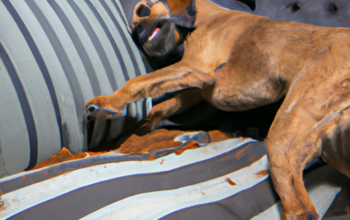As a caregiver, you may often find yourself asking questions like, “Why is my dog’s eye goopy?” As you well know, our furry friends can’t tell us when they’re feeling unwell. Therefore, it’s up to us to spot the signs and take action. In this article, we’ll explore the common causes of goopy eyes in dogs, the treatments available, and preventive measures you can take.
1. Understanding the Canine Eye
Firstly, it’s essential to have a basic understanding of how your dog’s eyes function to fully comprehend the potential causes of any issues.
Dogs, like humans, have a tear film that consists of three layers: the lipid layer, the aqueous layer, and the mucin layer. This tear film is incredibly crucial as it provides necessary hydration, oxygen, and nutrients to the eye.
Here’s a simple table to outline the functions of each layer:
| Layer | Function |
|---|---|
| Lipid | Prevents tear evaporation and overflow |
| Aqueous | Provides hydration and oxygen |
| Mucin | Ensures even distribution of the tear film |
Any imbalance in these layers can lead to eye problems, including ‘goopiness.’
2. Common Causes of Goopy Eyes
Now that you have a basic understanding of your dog’s eyes, let’s delve into the reasons behind goopy eyes. Here are the most common causes:
- Infection: Just like humans, dogs can have bacterial or viral infections that cause goopy eyes.
- Allergies: Dogs can be allergic to a variety of things, from pollen to certain foods. Allergies can result in itchy, watery, and goopy eyes.
- Foreign body: If your dog gets something in their eye, like dirt or a small piece of grass, this can result in increased tear production and goopiness.
- Dry eye: This condition occurs when your dog doesn’t produce enough tears, leading to irritation and often, an overproduction of mucous.
3. Treatments for Goopy Eyes
Of course, the treatment will depend on the cause of your dog’s goopy eyes. Here are some possible treatments:
- Infection: Your vet may prescribe eye drops or ointments that contain antibiotics to fight the infection.
- Allergies: Antihistamines may be recommended to alleviate allergy symptoms.
- Foreign body: Your vet will safely remove the foreign body and may prescribe eye drops to soothe the irritation.
- Dry eye: Artificial tears or medication to stimulate tear production may be necessary.
4. Preventive Measures
As they say, prevention is better than cure. Here are some steps you can take to prevent goopy eyes in your dog:
- Regular grooming: Keeping your dog’s face clean and trimmed can prevent dirt and foreign bodies from entering their eyes.
- Healthy diet: A balanced diet can boost your dog’s immune system and help them fight off potential infections.
- Regular vet check-ups: Regular check-ups can help detect any potential issues early.
5. Frequently Asked Questions (FAQs)
Finally, here are some short, quick answers to frequently asked questions about goopy eyes in dogs:
Q: Can I clean my dog’s goopy eyes at home?
A: Yes, you can use a warm, damp cloth to gently clean the area. However, if the problem persists, consult a vet.
Q: Are goopy eyes a sign of an emergency?
A: Not necessarily, but if your dog seems to be in pain, or if the goopiness is accompanied by other symptoms like redness or swelling, seek veterinary help immediately.
Q: Can I use human eye drops on my dog?
A: No. Always use medication prescribed by your vet. Human eye drops may not be safe for your dog.
Remember, when it comes to your dog’s health, it’s always better to be safe than sorry. If you’re ever in doubt, consult with a trusted veterinarian.



